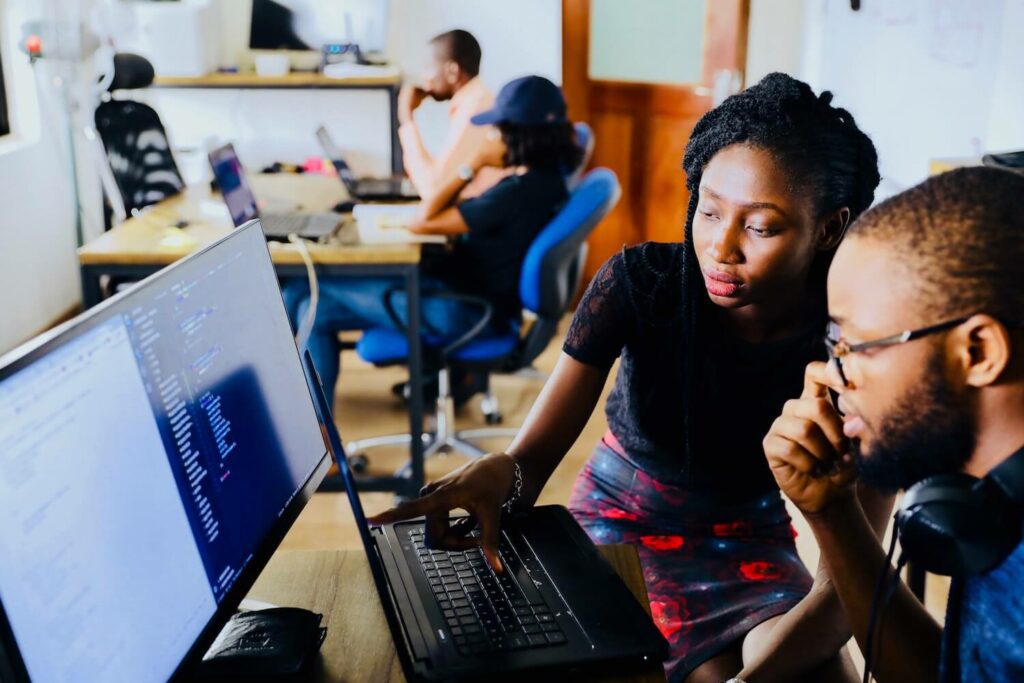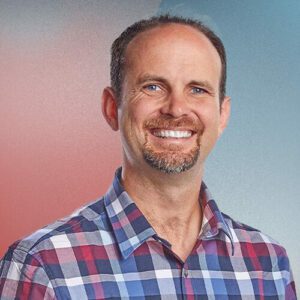Many years ago, the United States government funded a program called Erate, which simply put, is government funding to get schools and libraries online. What I want to do in this video is demystify what’s known as category one funding. That is, what kind of Internet or other connectivity civility is eligible to be reimbursed by the government. Here we go.
All right, let’s start off with what I would consider the simplest category One funding. First off, category one, meaning that this is the stuff that gets the first funding. I’ll have other videos where I talk about category two funding and getting your internal equipment switches, wireless access points, all of that funded. But category one gets the first funding because it’s literally the Internet access coming into your school or library, right? So there’s three different types of connectivity that could fall under that.
First off, Internet with fiber. This is where you go to an Internet Service provider, whatever provider is in your area, and they literally deliver a fiber optic connection to your school. Now, fiber optic connection can get up to 100 gigabits per second and I’m talking to you at the midpoint of about 2021. Who knows where that will come into play in terms of how much we can actually jam into that cable. And I know some of you are like, well, I thought that’s like the maximum you can do more.
You can do more because you can use different wavelengths of light. I mean, I’m getting super high level here, but you can actually expand a fiber optic cable so much more. And I’m telling you that right now because you’re going to see other kind of connectivity that comes into play, right? However, when it comes to category one connections, getting a Internet with fiber connection is the most qualified connection to where you can get one gigabit, ten gigabit, whatever it is that you’re getting as your Internet speed straight from the Internet Service Rider. And that is covered by Eright.
Now, the percentage that is covered is based on your free or reduced student lunches in your campuses. So that’ll be whatever percentage. Again, anytime you’re talking about government programs, there’s so much nuance. I’m going to put all the pricing for another discussion for now. Straight up, internet fiber connections are covered, no problem.
Internet with nonfiber is also covered. So fiber optic connection is phenomenal because it’s symmetric and in today’s COVID, or I should say postcovid world because we’re slowly coming out of it. Upload speed is really important. And when I say symmetric connection, that means your upload and download speeds are equal. See, nonfiber connections like DSL, cable modems, the stuff that you typically see in homes can also be used and funded with Erate.
However, these are known as asymmetric connections, which means your upload and download speed is typically different. That is, you have a lot of download and limited upload in most cases, which isn’t good for running online classes because oftentimes you’ll be broadcasting from your school if you’re running classes from the school for the students that are attending remotely. Right? So those are the first two types of connectivity, internet with fiber and Internet with nonfiber. The last one is a confusing one that is categorized on Erate funding forms.
Do you have commodity internet? What that means? And they’ll actually specify that there are no transport. It’s not like it just magically lands at your school. It just means that it could be bundled with something else.
Or maybe you’re getting it from a provider where they’re just like, hey, we’ll just give you 200 megabits per second of Internet connectivity, right? You don’t really know, you don’t care how they get it to you. You’re just paying them for commoditized Internet. Meaning whatever transport it is, that is something that can be covered by erate. Now that’s the beginning of erate.
That’s the basic ones. And most people get that because these are the basic type of Internet connectivity that exists in the world all over the place. But then you’ll see these noninternet connection types which are also covered. Let’s talk about those.
All right, I tried to cram the services over here on the right hand side. These are considered broadband transport, whereas these are considered Internet access, right? So these are also covered under category One funding by erate. They could have Internet access on them which could throw them into this category, or they might just be transport that is connecting buildings together. I’m going to draw this nice little red line here.
Perhaps at your campus you have a main building and you have one or more sub buildings, right? Your Internet connectivity comes into the main building and then you have connectivity that goes into these sub buildings. Now those buildings could be literally just across the sidewalk or they could be miles away, they could be across the parking lot. It doesn’t really say. Essentially, if they are part of your campus, they are your campus and they need to have connectivity.
So when it comes to Erate category One funding, first type of connectivity that can be funded is leased lit fiber. This means that a provider comes along, it could be the same provider that’s delivering your Internet connectivity and allows you to use their fiber optic that they will manage, they will maintain. If something happens to that fiber, they’ll take care of it. They’re monitoring. If you’re having connectivity issues and you’ll see why I’m emphasizing all this, that’s what it means by lit fiber.
It’s their fiber. They’re just going to charge you on a monthly basis for you to use their fiber to connect your two buildings together and thus get internet access through that network. Right? That is known as least lip fiber. That is something that is covered under ERT, category one.
This one gets into the dark world. Least dark fiber. Dark fiber is you almost have to say it with a foreboding tone, you know, dark fiber. Long ago they found out that the vast majority of cost when installing fiber or doing construction to put fiber through the streets of metropolitan areas. The vast majority was ripping up the street and digging holes and construction crews and all of that.
The actual fiber doesn’t cost anywhere near as much. So what happened was people carriers installed bundles, thousands of strands of fiber under the street because they said, we’re not digging up this street ever again, or at least not anywhere in the near term. So all of these extra strands of fiber can actually be leased to you. Now, the provider doesn’t manage it. They don’t support it.
They just say, here’s a strand of fiber, it’s under the street, technically ours, but we’ll let you use it. You can connect whatever equipment that you want to it and use it for yourself. That is known as dark fiber. Now, if you do that, it’s typically a little more expensive, at least initially, than lit fiber. However, you have full capacity of that or that line, the full capacity of that line belongs to you.
And using wavelengths, different waves of light, you can actually increase how much bandwidth that you’re sending over it to where it’s more cost effective for your school or your library than buying the lit fiber. Now, I emphasize costeffective because when it comes to connecting buildings together, you might say, oh man, I want to do some dark fiber because let’s say you’re a technologist. That would be cool. Then it’s kind of quoteunquote my fiber. Well, keep in mind, aida is going to make you justify that this is actually cheaper than least lit fiber, than just paying a service writer on a monthly basis to use their fiber.
I want one gigabit per second of connectivity. I’ll pay you every month that’s least lit. Whereas here that fiber is yours. That’s least dark, right? It also let me jump John To here may need some equipment to make it work that is known as Category One equipment.
When you dive into the Eric program, you find out that you can get all the network equipment, wireless switches, routers, firewalls, all of it covered under Erate category Two funding. However, Category One network equipment gets higher priority, and that is the equipment to literally make these connections work. As in, you know, the dark fiber doesn’t work without some of that category One. Same thing when it comes to selfprovisioned fiber. Selfprovisioned fiber is where your school or library is incurring the construction cost to run fiber between your buildings.
Maybe this building represents the central hub where you have tons of different Internet connectivity coming in for your campus, right? And this is going out to not one, but 30 different buildings all across the entire metropolitan area. The place where your campus expands to, right. You might trench the fiber yourself or even in a recent ruling, you might share some of that fiber. You might have some nonerate entities, businesses, or maybe city entities that are sharing some of that fiber.
ERTE guidelines as of 2016 have now said you can actually do that. You can share some of the cost and even some of the service with others that aren’t part of the Era program. If you do self provision fiber to where you essentially become a type of ISP yourself, keep in mind this isn’t just like, that sounds great, let’s do it. I mean, Erate will make you justify the cost of this so that in the end, it ends up being cheaper, more cost effective for your school to go this route long term than it would if you were just to sign up for a basic Internet connection or some least lit fiber along the way. So you have to make sure when you go with this, you justify it nonfiber.
This is fun because this is where you can get into connectivity that goes beyond just trenching up the ground and running fiber optic cable. A lot of times you can put wireless access points or dishes on the side of your building and shoot wireless signal across a parking lot, or could even go miles and miles to another dish sitting on this building, thus beaming Internet access between those two buildings. I know it sounds kind of like, who do that? People do it all the time. And it’s actually very cost effective, more cost effective than fiber.
And it can be very stable if you use the right kind of network equipment. That is what is considered nonfiber connectivity. Also eligible under Erate category One funding. I know this has been a lot, and honestly, there’s a lot more to the Era program, and I’ll be releasing videos here and there that explains how Erate works, from soup to nuts. I just know there’s a lot of schools and libraries out there that don’t get into ERTE because it’s just so darn confusing.
There’s a lot of complexity to any government program, right? So my hope is that by simplifying some of these things and getting to these really compact videos that you can come back to later on, it will open the door so that you can start using the funding that you’re typically giving to a carrier for the students sitting inside of your facility. When it comes to Eric Category One funding, this is the way.

